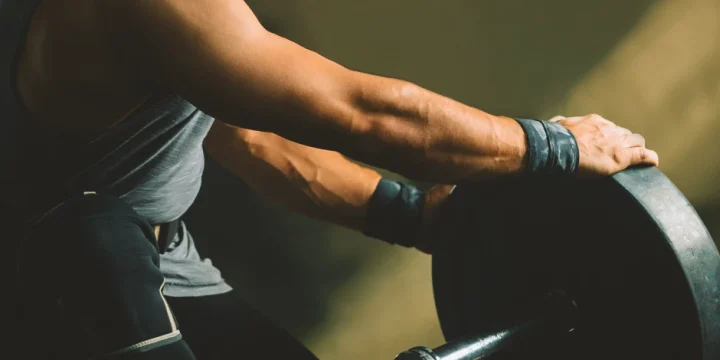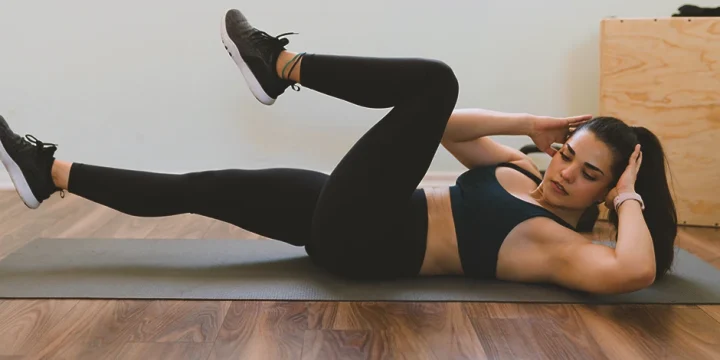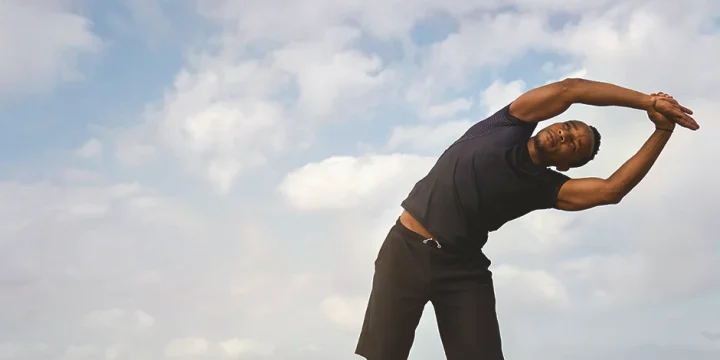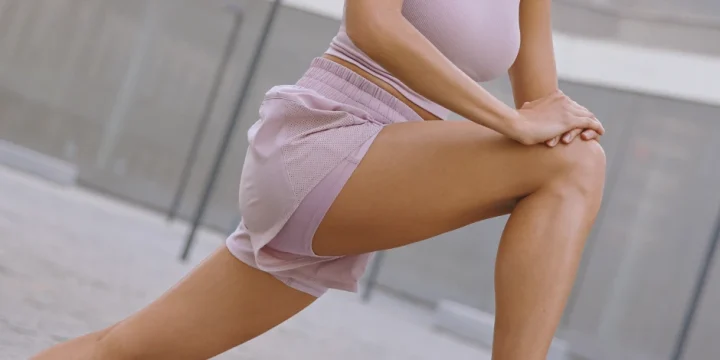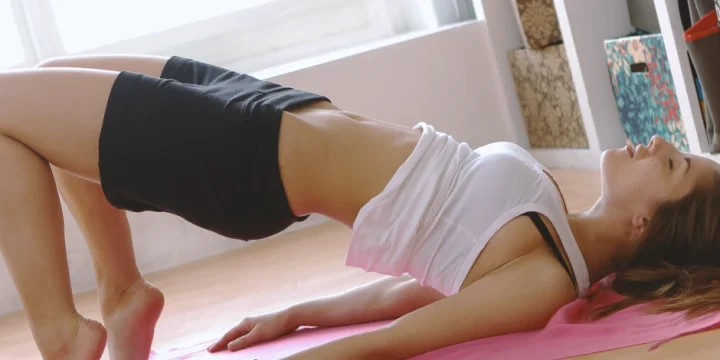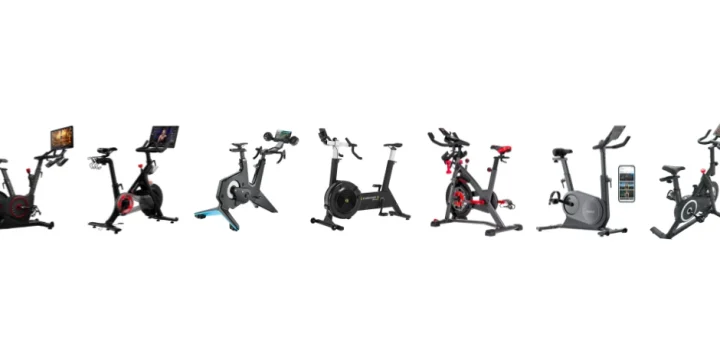When I suggest doing the cat stretch exercise before a workout, my fitness clients often don’t understand how mimicking a cat can be a good warm-up exercise.
But from my experience as a fitness trainer, I can tell you that it can play an important role in blood circulation in the back and in improving your posture.
To help you perform this exercise properly, I’ve compiled what I know about the cat-cow stretch and consulted a physical therapist.
Let's get into it.
Quick Summary
- To properly perform the cat stretch exercise, start on all fours, ensuring alignment of knees under hips and wrists under shoulders, and alternate between arching and rounding the spine.
- The cat stretch can be modified for different fitness levels and physical abilities, including a seated version for those who cannot perform it on the floor.
- Studies indicate that yoga movements like the cat stretch can significantly improve spinal flexibility and mobility, enhancing the quality of life.
- Personally, I find the cat stretch to be an effective and simple exercise for relieving back tension and improving posture, especially after long periods of sitting.
Step-by-Step Instructions

The only equipment you might need for the cat pose is an exercise mat for comfort purposes.
But you can also do without one.
1. Starting Position
To do this relaxation sequence correctly, let's begin by getting the starting position right:
- Start on all fours with your knees underneath your hips, wrists underneath your shoulders, and core muscles engaged.
- Keep your knees hip-width apart and on the floor and the palm of your hand shoulder-width apart and on the floor.
- Try to keep your spine in a neutral position supported by your shoulder blades. Don't push it up too much or let it hang. Just let it stay neutral.
2. Dipped Cat
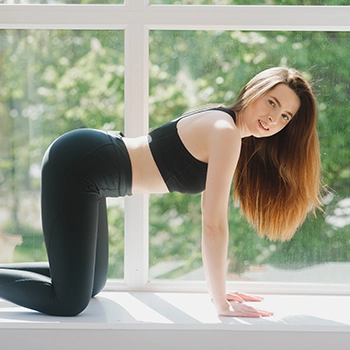
In the dipped cat position, you’ll be curving your spine to make a smooth bow.
Here’s how to do it:
- With your hands and knees on the floor, lift your head gently, and gaze straight ahead while moving your chest forward simultaneously.
- At the same time, lift your sit bones upward and curve your spine down.
To make the arch for the cow pose right, ensure you gaze gently toward the ceiling without cranking your neck.
3. Arched Cat
In the arched cat, the reverse movement creates a smooth dome, which I found to be a great counterbalance to the dipped cat.
Here’s how to do it:
- Start by returning to a neutral spine position with your hands below your shoulders and knees underneath the hips.
- Now, drop your head gently and gaze at your navel.
- At the same time you’re doing this, tuck your tailbone and draw your pubic bone forward while engaging your ab muscles.
- Combining these two movements should arch your spine toward the ceiling.
- Do a few repetitions while moving your whole spine before coming back to a neutral spine position.
Now, while both are simple to do, they should not cause pain.
So, it's wise to seek a medical expert’s advice in case you experience any.
If you’re in a wheelchair or cannot get down on your hands and knees, here’s a modification of the cat pose to help you perform it.
4. Seated Cat Stretch
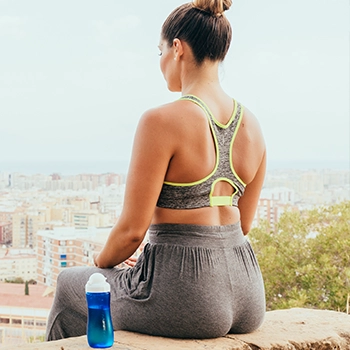
I also love the seated cat stretch, often referred to as the chair yoga pose, especially on busy days when I can't get on the floor.
Here’s how to do this movement:
- Sit towards the front of a sturdy chair with your feet flat on the ground.
- Place your hands on your thighs and bring your head down. Take a few breaths to establish your position.
- Now, move your hands forwards on the knees to help you arch back.
- Hold for a few seconds before moving to a neutral position.
- Roll on the front of your sit bones, lift your chin and push your sternum forward.
- Hold a couple of seconds.
- Repeat a couple of times.
Common Mistakes
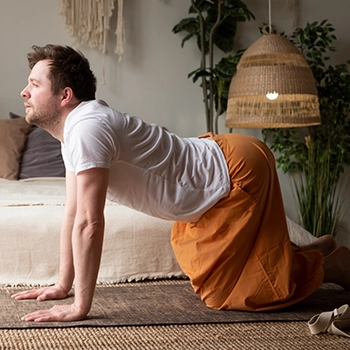
To do it correctly, avoid the following errors:
- Only move your spine. Keep your arms straight to ensure the movement is within your spine and not with your elbows or arms.
- Don't strain your neck. Try not to overextend when lifting your gaze. And when letting your head down, do it naturally rather than forcefully to avoid neck injury.
- Keep your shoulders relaxed while doing these stretches.
Benefits
I've personally experienced the benefits of flexing and extending my spine through the cat stretch. It's amazing how it gets the blood flowing and improves circulation around the back muscles.
It can help support the back, ease pain, and maintain a healthy spine, especially if you sit for long periods of time.
The cat pose can improve posture and balance, prevent injury, and increase the flexibility of your shoulders and neck.
A study in the Journal of Physical Therapy Science shows that yoga movements such as the cat pose can also increase your spine’s flexibility and mobility for a better quality of life [1].
“The cat stretch is a yoga mainstay that is done for no other reason than to stretch out the back, core, neck, and hips, and mobilize the spine, but it’s also good for preventing injuries due to tight posterior muscles.”
- Mathew Magnante, CFPl, Author at Fitness Volt
Neurological Benefits of the Cat Stretch
These are the neurological benefits of the cat stretch:
- Enhancing neural connections: Each time you arch your back and then round it, your brain works to establish and strengthen neural connections. These connections are crucial for muscle coordination and proprioception - the body's ability to perceive its position and movement in space.
- Improving brain-body coordination: Regular practice of the Cat Stretch can lead to improved brain-body coordination. This is particularly beneficial as we age or for individuals recovering from neurological conditions.
- Stress reduction and mental clarity: The exercise promotes a state of mindfulness, requiring practitioners to focus on their breathing and movements. This focus can help quiet the mind, reducing stress and anxiety levels.
- Potential in neurological rehabilitation: There's growing interest in incorporating exercises like the Cat Stretch in neurological rehabilitation programs. For patients recovering from strokes or dealing with conditions like Parkinson's disease, exercises that promote neural plasticity can be incredibly beneficial.
FAQs
What Muscles Does the Cat Stretch Work?
The cat stretch works the lower spine, core, and hip muscles. It also opens up the chest and lungs for easier breathing.
Is the Cat Stretch Good for Your Back?
Yes, the cat pose is good for your back as it stretches and releases the upper back, spine, and shoulders while strengthening the shoulders, core, and arms. It's a great way to warm up your spine for rigorous movement.
How Long Should I Do the Cat Stretch?
You should do the cat stretches for about one minute. Hold the extreme positions for about 30 seconds each and repeat 3–4 times.
Reference:
- https://www.jstage.jst.go.jp/article/jpts/27/2/27_jpts-2014-427/_article
About The Author
You May Also Like
